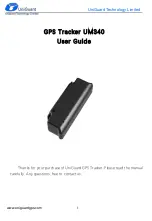
Components and Operation
Revision 04 (English), Date: 26.04.2016
11
From this we see, that the rate of climb of the difference voltage course is dependant
upon the installation height of the antenna, the size of the maxima are also proportional
to the current rate used.
There are therefore the following unknown variables,
right angular deviation
(requires
to be calculated),
height above guide wire
(varies according to vehicle load) and
cur-
rent rate within guide wire
(can be measured and is, when using a suitable adaptor on
the whole constant). For the solution of this there are 2 field equations for the horizontal
and vertical components available.
Under consideration of the sum voltage, it is possible to calculate the right angular de-
viation irrespective of the height (= height compensated) or irrespective of the guide
wire current (= current compensated).
However under certain conditions it may not be possible for a PLC to calculate the re-
quired equations, the following approximations can be carried out:
NOTE!
These approximations only work with a constant current input
and a height variation of max. 1.5.
•
When the sum voltage drops below 80 % of the maximum level, the difference
voltage is multiplied by 1.2.
•
When the sum voltage drops below 60 % of the maximum level, the difference
voltage is multiplied by 1.6.
•
When the sum voltage droops below 40 % of the maximum level, the difference
voltage is multiplied by 2
Those levels are examples. They are shown in the annex as three graphs (Figure 7 on
page 19 to Figure 9 on page 20). The antenna is calibrated as follows.
-
Guide wire current = 300 mA; height above guide wire = 200 mm; switchable out-
put set at approx. 3,3 V sum voltage.
2.3.3
Error Influence
-
The described system shows an antenna and is unable to determine a difference
between useful and interfering signals on the same frequency.
-
Furthermore the influence on the system caused by the return side at the guide
wire is to be taken into consideration. This side causes an offset factor within the
magnetic field and should have a distance between outwardside and returnside
of 100 x the reading height between antenna and guide wire.
-
On a long loop (e. g. by 5 kHz > 500 m), which is not fitted with a wave resistance
at its end, standing waves are formed. E. g. it appears that in a loop of length
/4
(1/4 wave) that at the input point no current flows but at the end maximum current
flows. A height compensated calculation would in this event not be possible. In
order to avoid stand waves a wave resistance (adaptor resistance) is to be fitted
to the guide wire at the furthest point from the generator, because the wave
impedance is relative to the geometrical layout of the loop; the adaption will only
work, if this layout is symmetrically built. This means that the return leg of the loop
should always be laid with a constant spacing from the outward leg.












































